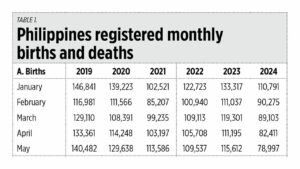Making HR a profit center

In general, the human resources (HR) department is a cost center. How do we correct that perception and convert it into a profit center? — Moon River.
THE first thing to do is to define and measure every important aspect of HR. If you can’t count the numbers, then it follows that you can’t manage HR. It’s a derivative of the famous line of Peter Drucker (1909-2005) who said: “You can’t manage what you can’t measure.” But first, you’ll have to focus on what’s important to your top management and the whole organization.
Unknown to many, HR’s basic role is to help the organization increase its profitability and sustainability. That’s one reason why people hate HR for many of its ills, like the perpetuation of “administrivia,” for example. Many don’t realize that HR can do more than that.
This can be done with the help of corporate-wide programs to improve labor productivity, enhance the quality of work life, energize employees through engagement, and reduce workplace tensions, among others. You can only do that if you know how to collect and measure the baseline issues and make improvements.
The trouble, however, is that HR people give little evidence to back their claims, other than giving motherhood statements and being satisfied with imaginary examples. More often than not, this happens because of HR’s inability to correlate their programs using the language of business.
If there are measurements, they usually measure the results of morale surveys, performance appraisals, and even absenteeism and tardiness rates. HR will always be happy with issuing year-to-year reports on how they reduced the attrition rate, but in terms of creating and emphasizing value out of cost reduction, for instance — less so.
HR can’t do this alone. It needs the active cooperation of line leaders, supervisors, managers, and other stakeholders.
COST-BENEFIT ANALYSISOne common example of HR’s problem is its helplessness in declining many requests to hire additional employees for certain departments, like those in operations headed by someone with a difficult personality. HR tends to simply co-approve the request for additional manpower without presenting alternative options like hiring or promoting from within or introducing multitasking.
If other departments are using facts and figures to prove their performance, HR must do the same, starting with a freeze-hire policy. For all requests to hire replacements for resigned people and movement from within, HR must assist the departments in coming out with viable solutions other than hiring additional manpower.
One example is when HR spearheads labor productivity improvement. This could be an issue between HR and other departments that wish to build empires, to the detriment of the organization. This happens all the time when operations or production demand that they know the business better than HR.
Therefore, their request to hire additional manpower must be approved by HR before it reaches the chief executive officer (CEO). If HR is not serious about doing its job or would like to play politics, it would be all too easy to buckle down under the pressure. To correct this, let’s examine the difference between American and Japanese managers in improving labor productivity.
Here’s an example: A car manufacturer produces 100 cars a month with 10 workers. When pressured by the CEO to improve labor productivity by 20%, what options would American and Japanese managers pursue? The Americans would tend to terminate two workers, leaving only eight people producing the same 100 cars a month.
On the other hand, the Japanese approach would be to retain the same number of workers, and task them with producing 120 units a month, instead of 100 units. There should be no terminations at all costs. You can readily secure cooperation when you assure people of job security.
Which one would you choose?
LEAN HIRINGOnce again, don’t forget to measure HR. Start today by knowing the baseline numbers. Look at the key variables. And prepare to be shocked by the cost. For example, let’s look at the recruitment process. Answer the following questions: What’s the average hiring cycle for new employees? For every day of delay, how much money is being lost by the organization?
How do you evaluate job applicants? What’s the first step in the evaluation process? What documents do you need from applicants before you start an online interview? How many interviewers do you need before you can come out with a shortlist of the top two candidates? Overall, how many man-hours do you need before the onboarding of successful candidates?
In general, what are the stumbling blocks in your evaluation process? And how do you remove those blocks to ensure a smooth transition? If you’re spending more than five working days before onboarding, then the presumption is that you don’t know about Lean Hiring, or simply, you don’t care.
Consult with Rey Elbo on Facebook, LinkedIn, and Twitter, or send your workplace questions to elbonomics@gmail.com or via https://reyelbo.com. Anonymity is guaranteed.




